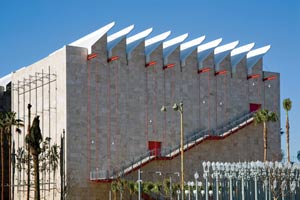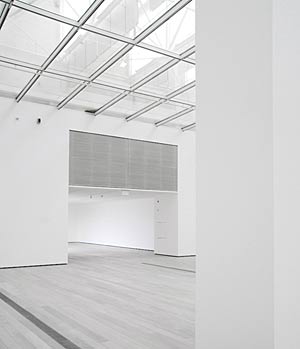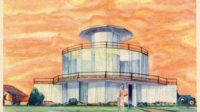A few random field notes on Renzo Piano’s new Broad Contemporary Art Museum building at the Los Angeles County Museum of Art (LACMA).
I assumed RECORD would already have an article on the Broad in the works, but I’m told that no, because Piano is designing so many museums and has also just won the AIA Gold Medal, the magazine is going to hold off for a while.


I suppose the goal is to avoid flooding the market with too many Pianos. (Full disclosure: I’m a consultant to the Isabella Stewart Gardner Museum in Boston, where Piano is doing an addition.)
Critics looking at a new building can resemble the fable of the six blind men describing the elephant. Each portrays a different beast, because each is touching only one part of it.
Different opinions on light
Case in point: A critic whose work I respect complained about the poor quality of the light in the Broad’s skylit top-floor gallery. He called it “gray and gloomy.” But most critics admired the light even if they didn’t like much else.
As for me, I visited LACMA once on an overcast day, with occasional light rain, and again on a clear and sunny one. I thought the light was spectacular both times. It was amazingly unchanged from the cloudy day to the clear one. I’d rank the top-floor light at the Broad with the best I know—with Kahn’s Kimbell in Fort Worth, his Center for British Art at Yale, Piano’s own Nasher in Dallas, Peter Zumthor’s amazing Kunsthaus in Bregenz, Austria, and the Dia:Beacon in upstate New York. The Beyeler Museum in Basel, Switzerland, by Piano, often makes such lists, but at least on the day I visited, the roof’s layers of sun-activated moving parts weren’t working. The light was uneven and frequently less than ideal.
The Broad’s top-floor gallery is high, wide, spacious, and filled to the farthest corner with a bright, calm, ambient light. Ellsworth Kelly has never looked so good to me. Neither has Jeff Koons, a very different artist. The light descends from a sawtooth roof of skylights, which bounce northern skydome light down through a clear glass ceiling. The glass is lined with a nearly invisible filigree grid that further modulates the light, and the glass sections are slightly crowned, like a roadway, apparently to shed rainwater.
What struck me most about this superb roof was the way it reminds us that in architecture, old ideas never really die. The Broad’s skylights closely resemble those of the Dia building, and the Dia began life back in 1929 as an industrial printing plant. It printed commercial boxes. Art circles back on itself: Who knows, maybe the boxes inspired the young Andy Warhol, whose work is now prominent in the Broad. In any case, the printing presses were illuminated by the same sawtooth roof that today so brilliantly illumines the Dia’s artworks.
A complaint by other critics is that the Broad doesn’t look enough like Los Angeles. By that I take it they mean it doesn’t possess the famous quirky, populist, car-culture diversity of the place, as celebrated in the early works of Frank Gehry and the long-ago writings of Charles Jencks.
There’s an interesting philosophical problem here. Is it possible to be deliberately quirky and populist? Can you do that as a matter of sophisticated choice? Don’t those qualities, to be authentic, need to emerge in a spontaneous, improvisational, even unconscious manner? Would an Italian Modernist be merely playacting if he sought to attain them?
Big-box syndrome
People complain that the Broad looks like a big box, as indeed it does. An art museum, like a performance space, is naturally a box of some shape, since windows are usually not desired. Beauty, though, is not unattainable. I think of the extreme candor of the cubic box of opaque glass that is Zumthor’s Bregenz museum, and how memorably beautiful it is. Bregenz doesn’t even give you a view out to its beautiful Alpine lake. It’s too concerned with purifying the experience of the interior space and the art, and nothing more.
The blank and rather bland box that is the Broad is hung, on the street side, with huge tapestries by another of donor Eli Broad’s favorite artists, John Baldessari. Maybe that’s one way, at least, that the new museum is like Los Angeles. Without much character of its own, it’s potentially a big and ever-morphing billboard.




Post a comment to this article
Report Abusive Comment